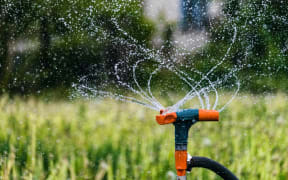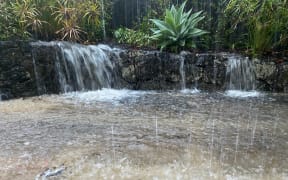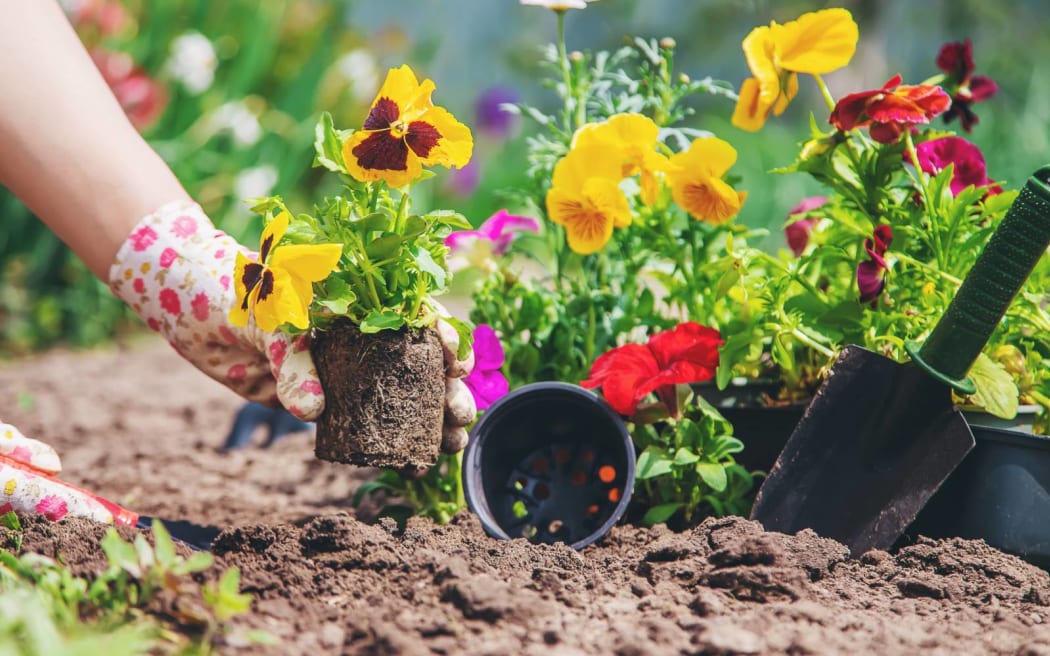
A gardener planting a flower garden. (file image) Photo: TATEVOSIAN YANA / 123RF
Meteorologists have gardeners on high alert with predictions the El Niño weather system will bring hot and dry conditions over the coming months.
During El Niño summers, New Zealand tends to experience stronger or more frequent winds from the west, which can encourage dryness, while the west coast of the country could be wetter than usual.
The past few days have been some of the warmest on record, after a soggy start to the year.
"It's pretty amazing after waiting two years for it," landscape designer and gardener Xanthe White told RNZ's Summer Times on Thursday.
"We're all walking around going, 'This is what makes life good, right?'
"It's quite interesting because for the last year we've been talking to people about getting rid of water with the floods and the weather conditions being extreme in that way. And now through this process, we've been having to remind people that… these swings of extremes are what we're going to be seeing as well, so you don't want to just get rid of all your water.
"Water is really important, and it's very hard to feel that way when you're drowning in it, but now we do need to start thinking about how we can retain and kind of manage water in our landscape."
With unusual weather systems on the way, plus the prospect of hosepipe bans, she has some tips to for maintaining a healthy and good-looking garden - such as not overwatering plants in the scorching summer heat.
'It's healthy for our gardens to dry out'
"One of the things which is kind of counterintuitive is that actually reducing water is one of the ways of retaining a healthy garden through dry periods.
"The natural response to do as rain patterns lessen and the soil dries out is to want to try and maintain water levels at a consistent rate so that, you know, that our garden remains constant and the same - but actually it's healthy for our gardens to dry out.
"And one thing that we've noticed is that gardens that are over-watered in extremely dry conditions often have more problems with root disease and soil issues than gardens that are left and allowed to dry out and harden off a little bit."
This does not mean no watering at all, White explained - just easing off the temptation to give them winter levels of moisture.
"What happens if you pour huge of water onto plants? You force growth - and those who are familiar with plants and watching them grow will be familiar with the fact that you get these fresh flushes of green, soft; new growth is soft and it takes a while for leaves to harden up, and if you think that as those temperatures - just like us - as the weather gets hot we will need to slow down and just like, take it easy, maybe even eat a bit less and like bring, bring our kind of rhythms down. And so we have to allow our plants to rest as well.
"So that's something that is very easy to do because it's about not doing too much."
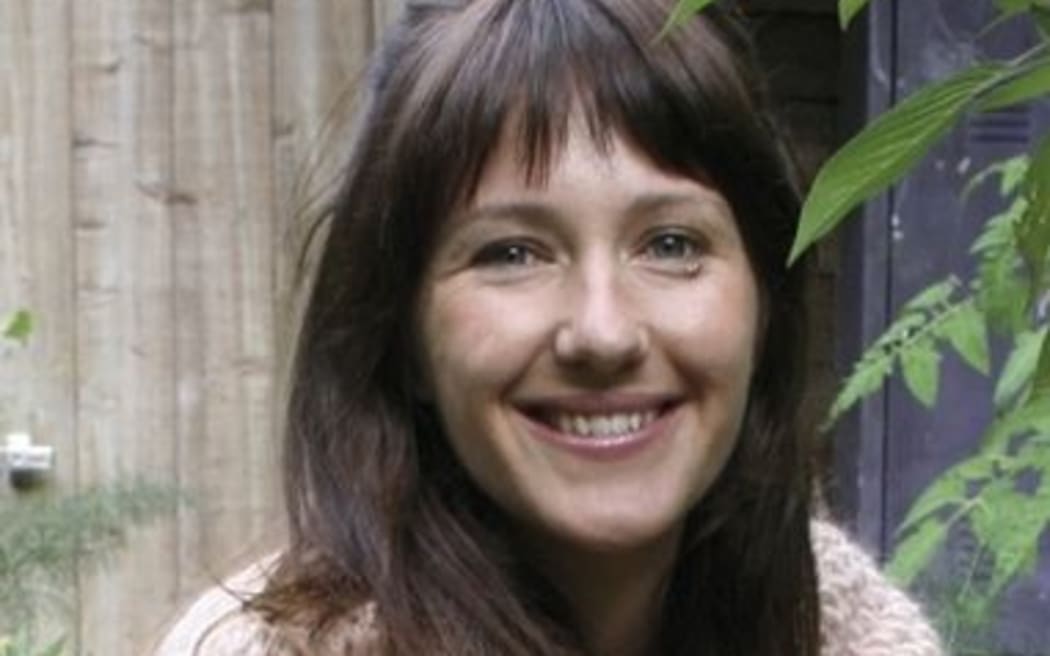
Xanthe White Photo: Supplied
Putting up a sunscreen is a good idea, she said, depending on what kinds of plants you are growing. Or use some plants to block the searing sun for others.
"This is one of the things with vegetable gardens we like - seek sun to develop fruit and it is really important, but once we get into these extreme conditions, the loss of water and the heaviness of that heat can actually become a problem.
"And so one approach you can take is that when you design your vegetable garden - so you have an understanding of sun angles at different times of the year - and if you really, really start getting seriously into your vegetable gardening, you can actually plant to create shade within the vegetable garden by using crops like corn that you could plant early in the season and get that height up into your garden.
"So you're actually creating some shade for other plants in the garden. So you can actually, rather than needing to put cloths and things over to reduce the water, you can actually think about the height and structure of the plants that you're positioning in your garden, the sun angles and creating areas, I guess, tiny little microclimates in your vegetable patch that will allow you to grow things like lettuces that need lots of water and constant water…
"But if you're in a situation where everything's sighing massively, putting a little bit of shade up is absolutely a good idea to just slow things down a little bit and give them a bit of a break."
As for what gardeners do when there are hosepipe bans restricting water usage, White said to keep an eye on the forecast - your plants might not need you to water them, even if you head away for a bit.
"You have to be careful with the timer… I've been away from my home garden but there's been enough rain for it to need no actual hand-watering because there's enough there… so you try and get your garden to be not dependent on a hose if possible.
"It's different with new plants that you're trying to establish - because they don't have the root structures going into the soil, they tend to need a little bit more fuss.
"But what we should all be working towards is, I guess, being water-independent - so being able to make sure that we have systems where we can store water to use for these periods to keep our gardens going, so that we're not dependent on taking out of the main systems when our garden is something that we might be dependent on getting our food consistently from, for instance."
'Every little drop counts'
Storing rainwater for future use if possible takes pressure off creaking infrastructure, she said.
"Every little drop counts, you know, and every little bit that you manage on site just takes the pressures off kind of bigger resource management systems and makes everything more resilient.
"And, you know, you're returning that water into the soil rather than it being put into stormwater drains. So by storing water, putting it into your garden, you're actually preserving underground aqueducts and those water systems, which are actually really important in the management of floods that they work effectively and that water is drawn down into them, because if you end up with a total dry service and no drawdown, then you are more likely to have flooding.
"So we want to see on-site management, but we also can look at the way we treat soil. Bare soil is going to dry out really quickly and it also oxidises, so it loses the value in the organic matter in it. So we don't want to leave earth there ever. And there's a few ways we can approach that - one is by planting it, so green mulch, make sure that everything's always lovely and lush and green and covered.
"But as in our vegetable garden, as plants are kind of establishing we can use soft mulches like pea straw or some sort of mega mulches and little bark mulches are good as well.
"But the pea straws are particularly good because in a vegetable garden that you're harvesting from frequently - so, therefore, replanting - it's quite good to have something that breaks down, quickly, reconditioning that soil. And the pea straw has the added advantage that it has nitrogen in it, because legumes fix nitrogen in their roots. They have these little bacterias which live in little nodes and their roots and actually put nitrogen into the soil, which is one of the key things for growing fresh greens."
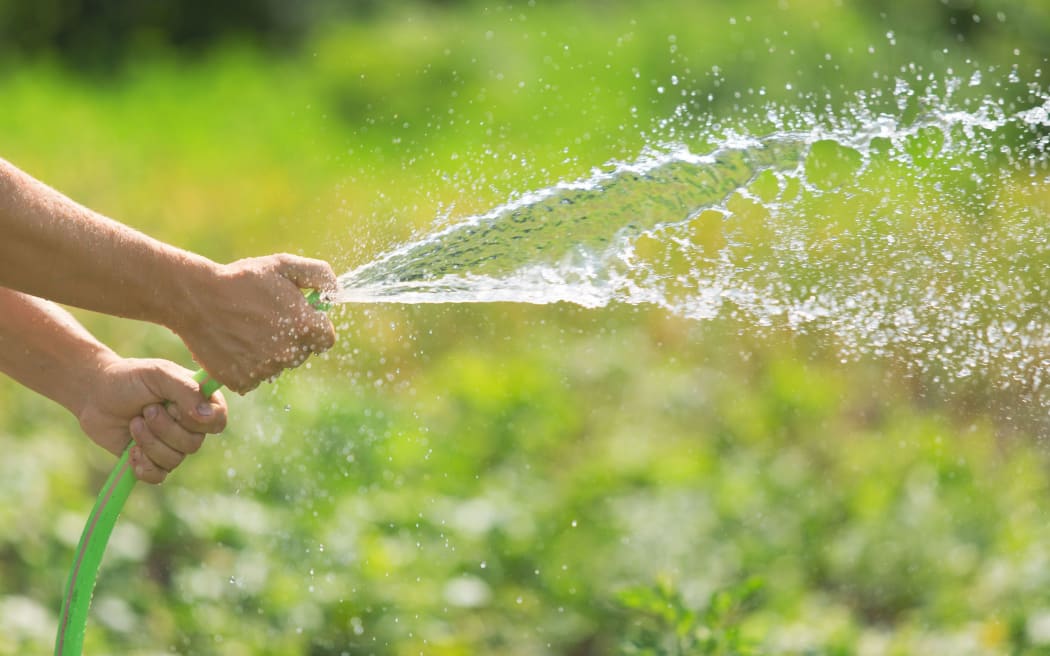
Don't overwater your plants in summer, Xanthe White says. Photo: 123RF
One last thing to try to get the most out of your garden this summer is succession planting.
"Basically what happens is on sort of around Labour Weekend… we all start getting a little bit like, spring fever. We all get really excited and we go and we plan out our whole vegetable garden and then we end up with everything being ready at the same time and no spots to put new things in and we go, 'Oh, we didn't leave room for this.'
"So with succession planting, you're looking at trying to get those cycles. So if you know that your family goes through like three lettuces a week, if you can get your lettuces kind of planted in sequences so that you don't have all your lettuces ready at the same time, you've got little ones coming on as well as big ones, that means that you get a more consistent supply of food through that productive period as well.
"It's about managing and planning for your kitchen and for your family's use and giving some thought to that and then just keeping young seedlings coming on, and this is the easiest if you're growing from seed. If you're growing from a punnet, you need to know that you've got six or something, and so you need to work in numbers of six.
"Part of that is about like thinking about the time when you look at your crop, looking and reading, how long is it going to be before that crop comes to harvest? And making sure that not everything is happening at the same time so you can keep bringing new plants into the garden. You can get a really great cycle of production happening."
